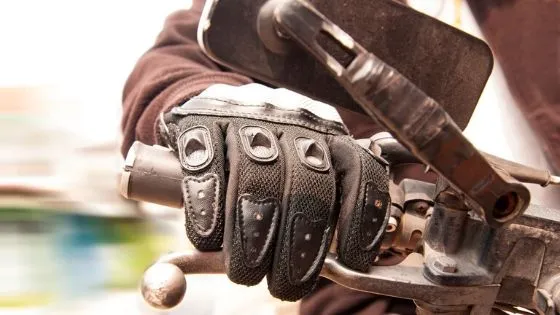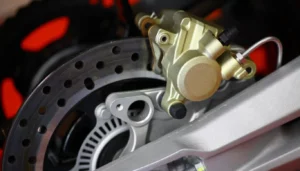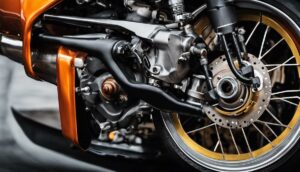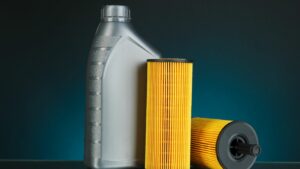Bleeding the brakes of your Dirt Bike is a standard procedure that has to do while the routine maintenance and servicing is in the process.
It is a genuinely straightforward approach that should be accomplished for security as well as to guarantee the legal support of such a fragile piece of your machine.
Brake liquid breaks down after some time by engrossing dampness and air that’s the reason for this procedural measure that has to do to your bike’s engine.
The idea behind it is, the brake oil on your bike needs changing when braking feels “light” as opposed to giving an immediate, responsive stop.
Safety Measures
Tightening the brakes provides a risk for breakage, and therefore, if it is painful for you to fire the brakes, please don’t try to apply the slowing process.
Make sure that you regularly wear eye protection gear and adhere to corresponding concentration if you work on liquid breakage.
The cleanliness inside the braking system is vital, so it is essential to have a brake flush and drainage after the bike has cleaned, as it is indispensable to have a perfect cruiser before a drifting or opening of a bleeder.
The brake liquid that you use will come from another still unopened container as the
manufacturer prescribes.
You can find the sort of brake fluid you use on the first front of the ace hall, or in an actual
assistance manual for the wheel and this must add because sealing failure, in any case, will
result in a loss of brake power.
When you run out of the possibility of breakage liquids when drying, never use the liquid brake that has the issue of slowing process, no matter how clean it looks.
Brake fluid requires the airborne dampness to effectively demolish the brake material, which is the product of brake fluid remaining in the container or a previously opened collector.
It is why the airborne dampness must intermittently replace by brake fluid and only refresh the brake fluid in a fixed tank.
For kids who are going to join dirt bike riding school then kids dirt bike safety tips are the most important thing to know before joining there.
Tools required
You’ll need the accompanying apparatuses to change the brake liquid in your dirt Bike:
● Dab 4 brake liquid
● Wrench
● Drip pan
● Screwdriver or Torx driver
Best way to bleed the brakes on a dirt bike
It would help if you were sure that the front brake pads placed appropriately before starting after the front brake is applied.
As pads which are worn over and above their wear limit can harm breakage efficiency and transfer extreme heat into the brake fluid.
Bring the handlebars to the level of the chamber.
Note: If the structure of the rider’s turn is incredible, it can be vital for the front chamber to be re-oriented to the level of the archive before clearing it.
The reason behind it is that it prevents the fluid against the mark on the continuous stock of the set, just as appropriate stacks of fresh fluid by altering the fluid level into the high score.
If the area around as load is faulty and the storage area is higher than clear, the amount is
spreading through the screws.
The spread and stomach carefully to avoid pollutants from dropping in the store’s fluid-interminable stock of the spread between the body as cargo shop and the range.
Use your finger to wipe off the border zone of the chamber repository and extract contaminant (sand particles, etc.) from the fluid pool, at the point where the chamber spreading becomes empty.
It proposed that a vacuum source used where possible. Then clear the fluid in the store a while before it dries out and does not cover the port where the fluid stock has placed in the container.
When most fluid drains from the tank, the solvent will again withdraw from the stock, and the liquid emptied as a procedure for flushing the database when the fluid is not adjusted for some time.
Finish the archive again directly with brake fluid so that the fluid level is above “The Good,” and when beginning the brake flush process, there is one ton of liquid available.
Note: During this process, the amount of the brake fluid in the vault mustn’t decrease because then the port at the base of the area is open so that it can allow air to reach the easing back instrument.
Slide the bottle edge over a brake bleeder with the right size box-end wrench (most possibly 8 mm or 5/16 “is indistinguishable).
Include a precise vinyl tube length in the bleeder areola with the clamp, then position the tube into a proper channel capacity.
Once you have the tubing connected to the bleeder, open the bleeder warningly at about 1/4-1/2 a turn for break-out fluid. (Apart from finding it difficult to remove the bleeder, this is the thing to do when the bleeder cements.)
Make no effort to push the Brake Lever with the Bleeder Open and unlock.
In the case that the brake fluid doesn’t cross the target on the bleeder or you end up with a
bleeder shut at the turn to make.
Then it is possible for the Bike to rest average time with brake fluid in the inventory and the bleeder(s) near reliable works, causing the brake loss less complicated until the weight is ideal.
When the brake fluid is on the floor, strike a rubber hammer and bang the calliper slightly from the base to move up to the edge, softly hitting the calliper and setting up “Hits,” causing some air and old fluid that can be stuck on a piston position to be forced out and out where it can.
Using this method, a large portion of the brake solvent has been flushed into the line while the store adequately cleaned.
If no fluid brake, fluid routes from the brake bleeder are open within two or three snapshots of the bleeder, it might be vital to detach it from the blender utilizing a solid wire or a pick, brake tight, big, compact air, away from the bleeder gap of the checks.
Then to reinstall the bleeder into the calliper, leaving the fluid between 1/4 to 1/2 of the blueberry bottom to the calliper.
When the braking line has filled by a generous portion of the brake fluid and the vault is stable, cautiously scan the store level with the bleeder open, shutting the bleeder as its level thumbs between the “Min” and the “Max” points.
By and by, pulverize the front brake lever and ensure that you have a solid turn with the bleeder shut down immobility.
Start to let the brake fluid miss the mark on the bleeder until you get the hot air and sufficiency of weight. If you do not smash the pressure, or if it is not as robust as you think it should be.
The bleeder can shut firmly, and the turn is sharp to guarantee its expansion with the brake fluid level of ideal stature (it shows by the “Min”-Max” number.
Gasket/stomach are adequately washed with brake clean and dried with compacted sand, and the stomach, stretch, and screws are then reinstalled.
At the moment when the stopping finished, and everything is back on, it’s a smart idea for us to revisit the bleeder to insure its tightness, then smooth the locale of the chamber and the calliper with water.
Then eventually use compacted air to clear anything away from the distance of any water or brake fluid.
Conclusion
That’s all to get the front brakes down so that you can have a new front brake pattern that is so visible (becoming perfectly healthy on the front brake pads), that hurling stops and braking is now quick.
So, this is the brief diagnostics that is required to understand the Bleeding of front Brakes of Dirt Bike with providing all the proper understanding to the context and practically implemented techniques for the same.






